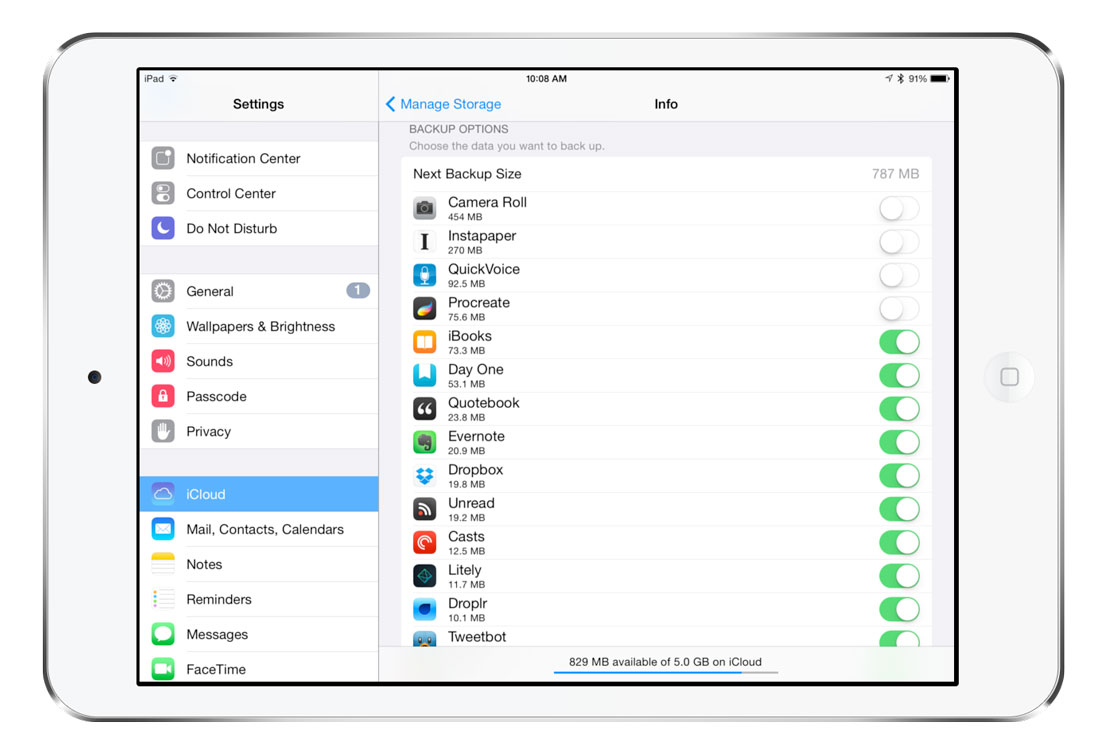Dec 21, 2018 Back up manually. Go to Settings your name iCloud iCloud Backup (or Settings iCloud iCloud Backup), then tap Back Up Now. For information about messages that may appear while backing up, see the Apple Support article If iCloud Backup couldn’t. Jul 26, 2019 Step 1 To start with, go to the System Preferences on your Mac and launch iCloud. Step 2 If you are using iCloud for the first time, then you would be asked to provide your Apple ID and password to sign in. Step 3 Once it is done, you can simply check the kind of data files you wish to store on iCloud.
- Back To My Mac Icloud
- How To Start A Manual Icloud Backup From My Mac Password
- How To Start A Manual Icloud Backup From My Mac Computer
Most of the Apple users know what is the iCloud backup and are accustomed to using iCloud to back up iPhone or iPad, but have you ever wanted to know where are the iCloud backup files on your iPhone, iPad, Mac or Windows? And how to access your iCloud backup files to view or even delete iCloud backup when you have run out of the free 5GB space? No worry, read guides below to get complete answers. What's more, a free iCloud alternative to back up iPhone or iPad - EaseUS MobiMover Free is introduced in the last part, check the information if you need.
Access iCloud backup on iPhone/iPad
Here is how to access iCloud backup on iPhone and iPad
For users with iPhone and iPad with iOS 10.3.2 or later:
Go to Settings> [your name] > iCloud > iCloud Storage > Manage Storage.
For users with iPhone and iPad with iOS 10.2 or earlier:
Back To My Mac Icloud
go to Settings > iCloud > Storage > Manage Storage.
Access iCloud Backup on Windows and Mac
For Mac users:
Go to Apple menu > System Preferences > click iCloud > Manage.
For Windows users have downloaded iCloud control center:
How To Start A Manual Icloud Backup From My Mac Password
Window 10: Choose Start menu > All Programs. Click iCloud > iCloud.
Windows 8.1: Go to the Start screen > click the down arrow in the lower-left corner>click iCloud app > Manage.
Windows 8: Go to the Start screen > click the iCloud > Manage.
Windows 7: Choose Start menu > All Programs > iCloud > iCloud > Manage.
View and delete iCloud backup on iPhone and iPad
After finding the iCloud backup file on iPhone and iPad, we can do more further operations, like iCloud backup viewing, editing, and deletion. For deleting iCloud backup on Mac and Windows, you can learn from how to delete iCloud backup on Mac and Windows PC.
Step 1: On iOS 10.3.2 or later: go to Settings > your name> iCloud > iCloud Storage. On iOS 10.2 or earlier: go to Settings > iCloud > Storage.
Step 2: Tap Manage Storage, and you can find three kinds of iCloud backup categories: PHOTOS, BACKUPS and DOCUMENTS & DATA.
Step 3: Tap BACKUPS to choose a backup. Choose data to back up in the backup lists directly delete the backup by tapping Delete Backup.
How to back up iPhone/iPad with a free iCloud alternative
Using iCloud to back up iPhone or iPad is quite convenient, but the space limitation is its biggest weakness. Each Apple users just get 5 GB for free at the beginning you set up iCloud, and you have to pay for extra space every month. But if you don't have an iCloud purchase plan, we highly suggest you use this free iPhone transfer software, EaseUS MobiMover to transfer iPhone or iPad data to the computer (Mac or PC) for backup with simple one-click. MobiMover supports managing almost all the iOS data, like contacts, messages, notes, music, videos, photos, voicemails, voice memos, and Safari bookmarks & history. For experience MobiMover properly, please make sure your iDevice is running iOS 8 or later.
Step 1: Connect your iPhone/iPad to your PC with a USB cable. Please tap Trust This Computer on the device screen if a pop-up appears and requires. StartEaseUS MobiMoverand select the iDevice to PC pattern in the main interface.
Step 2: MobiMover enables you to back up everything from your iPhone/iPad to the PC in a readable way, which can be realized by iTunes. You can back up the whole iPhone/iPad data at one time. Or uncheck other data boxes and keep the categories you'd like to export.
How To Start A Manual Icloud Backup From My Mac Computer

Step 3: Click the Folder icon in the top-right corner to set the location for backing up iDevice data. Or you can let MobiMover save the files at a desktop folder.
Step 4: Click Transfer and MobiMover will start to back up your iPhone/iPad to the computer quickly. When it completes, you can click View to check the items. If the exported data is saved as a .html file on your computer, you need to open it with a browser to view it on the web page.